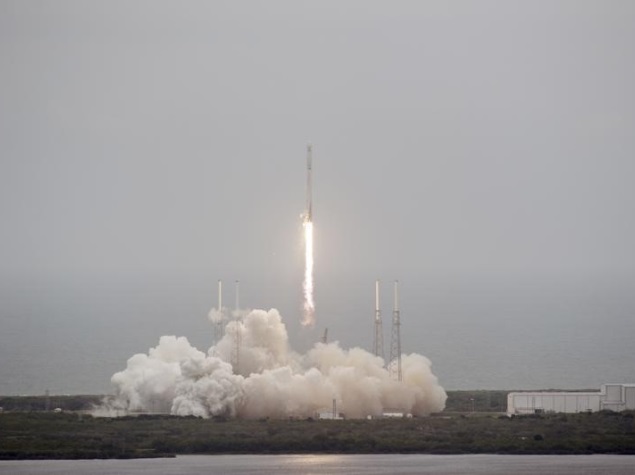- Home
- Science
- Science News
- Simulated Mars Mission Gutted in Fire
Simulated Mars Mission Gutted in Fire

According to a Daily Mail report, the mission involved four "astronauts" living in isolation for two weeks in the hope of recreating the psychological effects of life on Mars.
Instead, they had to deal with a real life emergency when a devastating fire, with 10 feet (3 metres)-high flames destroying the Mars Desert Research Station (MDRS).
The crew members attempted to battle the flames on their own for over an hour.
The Mars Society, which ran the mission, said that no one was hurt in the accident.
The fire was caused by an unusual power surge in the astronaut's "habitat", which lies near the small town of Hanksville in Utah.
During their stay, the astronauts' home was the habitat module, a two storey silo-shaped building, eight metres in diameter, with laboratory facilities and living spaces.
According to space.com, which the Daily Mail cited, crew Commander Nick Orenstein, spotted smoke billowing from the greenhouse and ran outside to take a look.
"This is a moment where instinct took over, the instinct of fight or flight, and we had (to) fight," Orenstein told space.com. "There really wasn't a question at the moment."
The middle of the greenhouse called the GreenHab, was destroyed and an investigation found that an electrical heater placed too close to shelves caused the accident.
Orenstein's crew stayed in Hanksville and commuted back and forth to the MDRS and coordinated with emergency officials before deciding to end the simulation early December 31.
The GreenHab that was destroyed was the second greenhouse built at the MDRS, after the first one collapsed under heavy winds.
The Mars Society said they it would aim to have a replacement structure ready in time for the next batch of "astronauts" to live at the Utah station.
While being part of the mission, contact with the outside world is strictly limited, with a very slow Internet connection restricted to allow just a few emails in and out each day.
Most communication was with "mission control", which asked the crew members for reports on every aspect of their lives during their two-week shifts. That included details on their food intake, exercise, and psychological status.
The experiments being conducted in Utah and a sister station in the Arctic are designed to help scientists learn more about what astronauts would endure on such a trip.
The shortest possible journey to Mars is 140 million miles, or a bit over 225 million kilometres, a trip that is thought to take around seven months.
Catch the latest from the Consumer Electronics Show on Gadgets 360, at our CES 2026 hub.
Related Stories
- Samsung Galaxy Unpacked 2025
- ChatGPT
- Redmi Note 14 Pro+
- iPhone 16
- Apple Vision Pro
- Oneplus 12
- OnePlus Nord CE 3 Lite 5G
- iPhone 13
- Xiaomi 14 Pro
- Oppo Find N3
- Tecno Spark Go (2023)
- Realme V30
- Best Phones Under 25000
- Samsung Galaxy S24 Series
- Cryptocurrency
- iQoo 12
- Samsung Galaxy S24 Ultra
- Giottus
- Samsung Galaxy Z Flip 5
- Apple 'Scary Fast'
- Housefull 5
- GoPro Hero 12 Black Review
- Invincible Season 2
- JioGlass
- HD Ready TV
- Laptop Under 50000
- Smartwatch Under 10000
- Latest Mobile Phones
- Compare Phones
- Honor Magic 8 RSR Porsche Design
- Honor Magic 8 Pro Air
- Infinix Note Edge
- Lava Blaze Duo 3
- Tecno Spark Go 3
- iQOO Z11 Turbo
- OPPO A6c
- Samsung Galaxy A07 5G
- Lenovo Yoga Slim 7x (2025)
- Lenovo Yoga Slim 7a
- Lenovo Idea Tab Plus
- Realme Pad 3
- Moto Watch
- Garmin Quatix 8 Pro
- Haier H5E Series
- Acerpure Nitro Z Series 100-inch QLED TV
- Asus ROG Ally
- Nintendo Switch Lite
- Haier 1.6 Ton 5 Star Inverter Split AC (HSU19G-MZAID5BN-INV)
- Haier 1.6 Ton 5 Star Inverter Split AC (HSU19G-MZAIM5BN-INV)







![[Sponsored] Haier C90 OLED TV | Dolby Vision IQ, 144Hz OLED and Google TV in Action](https://www.gadgets360.com/static/mobile/images/spacer.png)









